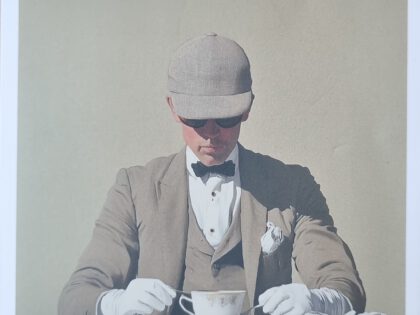„People had always said that Ove was ´bitter`. But he wasn‘t bloody bitter. He just didn‘t go around grinning the whole time.“
Ove will sterben. Seit seine Frau Sonja gestorben ist, hat sein Leben auch aufgehört. „People said Ove saw the world in black and white. But she was color. All the color he had.“ Er bereitet alles vor. Mit dem Strick. Mit Auspuffgasen. Mit der Flinte. Doch immer kommt etwas und jemand dazwischen. Die neuen Nachbarn. Die alten Nachbarn. Der weiße Skoda, der verbotenerweise in die Wohnanlage fährt. So geht das nicht.
Ove ist ein korrekter Mensch. Er hält sich an Recht und Gesetz. Geht zur Arbeit. Kauft alle drei Jahre einen neuen Saab. Behelligt niemanden und will nicht behelligt werden. Mit seinem Freund Rune liegt er in ewigem Streit.
“To men like Ove and Rune dignity was simply that they had to manage on their own when they grew up, and therefore saw it as their right not to become reliant on others when they were adults. There was a sense of pride in having control. In being right. In knowing what road to take and how to screw in a screw, or not. Men like Ove and Rune were from a generation in which one was what one did, not what one talked about.“
Immer wieder kommt Ove in Situationen, in denen er handelt – alles andere hätte Sonja nicht gutgeheißen. So rettet er einen Mann, der auf die Gleise gefallen ist, ein Kind aus einem brennenden Haus, bringt seiner Nachbarin Autofahren bei und nimmt erst die Katze und dann einen Jugendlichen auf – nicht aber ohne seine allmorgendlichen Rundgänge zu vernachlässigen – es muss schließlich Recht und Ordnung herrschen. Als Rune seine Hilfe braucht verschiebt er das Sterben, und danach spielt es irgendwie keine Rolle mehr.
“´That‘s Jimmy, and that‘s the cat, and that‘s Patrick and me. And that’s you,` explains Parvaneh.
When she says that last bit she points at a figure in the middle of the drawing. Everything else on the paper is drawn in black, but the figure in the middle is a veritable explosion of color. A riot of yellow and red and blue and green and orange and purple.
`You’re the funniest thing she knows. That‘s way she always draws you in color´, says Parvaneh.“
Schon „Beartown“ von Fredrik Backman (zu finden auch hier in den Rezensionen) habe ich mit fünf Sternen bewertet, und eigentlich ist auch „A Man Called Ove“ ein 5-Sterne-Buch. Ich ziehe einen halben ab, weil ich den Anfang doch ein klein wenig zäh fand. Denn Ove ist kein sympathischer Mensch. Er ist ein Pedant, keiner, den man selbst gern als Nachbarn hätte. Zumindest nicht, bis man ihn etwas besser kennenlernt.
So ergeht es einem auch beim Lesen. In Rückblenden wird Oves Leben erzählt und obwohl man diesen schrulligen Typen nicht mögen kann, tut man es doch. Nicht nur einmal musste ich laut lachen, und ein paar Tränchen hab ich auch verdrückt, vor Rührung. Mit Kitsch hat das aber gar nichts zu tun. Eher damit, worauf es im Leben eigentlich ankommt.
„Death is a strange thing. People live their whole lifes as if it does not exist, and yet it‘s often one of the great motivations for living. Some of us, in time, become so conscious of it that we live harder, more obstinately, with more fury. Some need its constant presence to even be aware of its antithesis. Others become so preoccupied with it that they go into the waiting room long before it has announced its arrival. We fear it, yet most of us fear more than anything that it may take someone other than ourselves. For the greatest fear of death is always that it will pass us by. And leave us there alone.“


